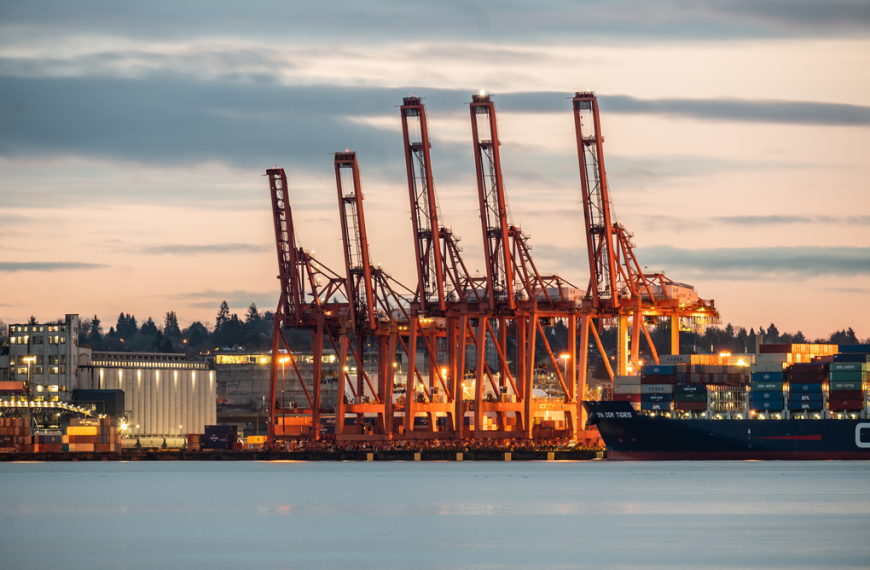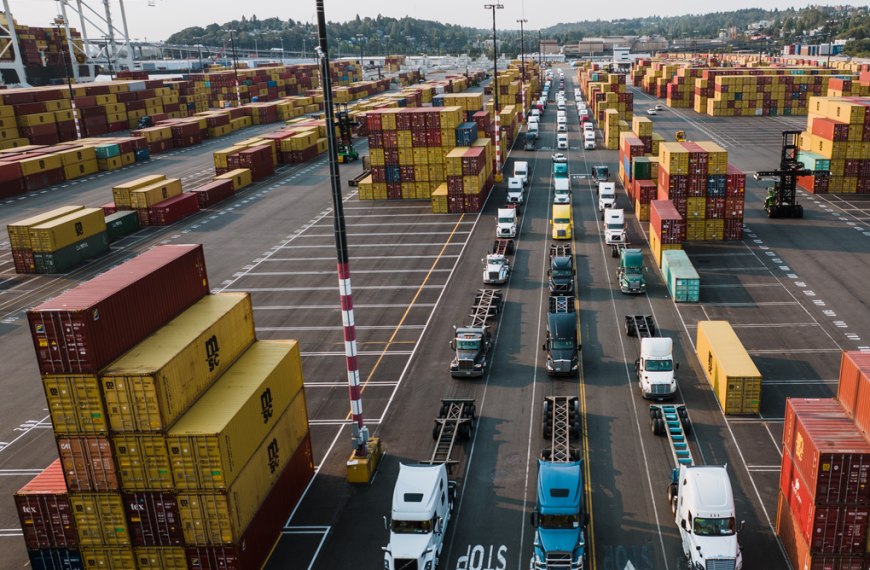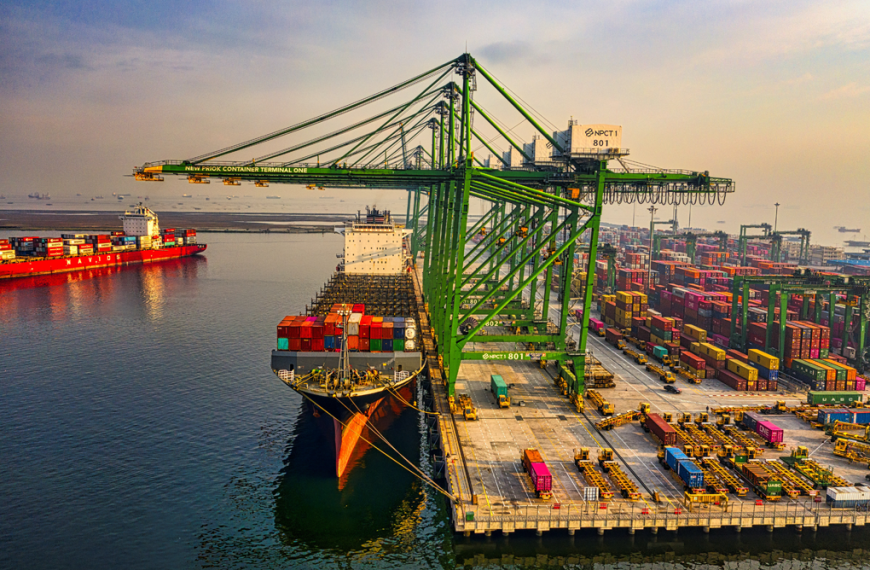When it comes to import and export of goods, there are many challenges you’ll face. One of the most critical aspects of the process is documentation and customs clearance. Without the right paperwork, your cargo may never reach its destination. In this article, we’ll discuss everything you need to know about import and export documentation and customs clearance to ensure a successful shipment.
- What is Import/Export Documentation?
- The Importance of Import/Export Documentation
- What is Customs Clearance?
- The Importance of Customs Clearance
- The Role of Freight Forwarders
- Understand the Requirements: Key Tips for Successful Import/Export Documentation and Customs Clearance
- Related Articles
- Choose the Right Mode of Transportation
- Use a Customs Broker
- Related Articles
What is Import/Export Documentation?
Import and export documentation is the process of preparing and submitting the necessary paperwork for your shipment. The paperwork includes documents such as commercial invoices, packing lists, bills of lading, and more. These documents provide customs officials with detailed information about the shipment, including the goods’ value, origin, and destination.

The Importance of Import/Export Documentation
The importance of import and export documentation cannot be overstated. Proper documentation ensures that your shipment complies with local regulations, avoids delays, and reaches its destination on time. Additionally, documentation helps mitigate the risk of legal issues, such as fines or the seizure of your cargo. It’s crucial to have a clear understanding of the requirements for import and export documentation for both the country of origin and the destination country.
What is Customs Clearance?
Customs clearance is the process of verifying that your shipment complies with all local regulations and laws. The customs clearance process typically includes an inspection of your shipment by customs officials to ensure that it meets all requirements. During the inspection, officials may verify that the documentation matches the contents of the shipment and that the goods meet any necessary safety or environmental standards.
The Importance of Customs Clearance
Customs clearance is a critical part of the import and export process. Without proper clearance, your shipment may be delayed, or even worse, rejected entirely. A successful customs clearance process is essential for ensuring that your goods arrive at their destination on time and in good condition.
The Role of Freight Forwarders
Freight forwarders play a vital role in the import and export process. They are responsible for coordinating the shipment and ensuring that all necessary paperwork is in order. Freight forwarders can also assist with customs clearance by providing guidance on regulations and laws, ensuring compliance with local requirements, and helping to resolve any issues that may arise.
Import and export documentation and customs clearance are critical aspects of the import and export process. Understanding the requirements for documentation and customs clearance, and working with experienced freight forwarders, can help ensure a successful shipment. Remember to prepare all necessary paperwork, ensure compliance with local regulations, and work closely with your freight forwarder to address any issues that may arise. With these tips in mind, you’ll be well on your way to a successful import and export process.
Understand the Requirements: Key Tips for Successful Import/Export Documentation and Customs Clearance
Importing and exporting goods can be a lucrative business, but it’s crucial to understand the requirements for successful import and export documentation and customs clearance. Failure to comply with regulations can result in costly delays and fines. In this article, we’ll discuss some key tips for understanding the requirements for successful import and export documentation and customs clearance.
Research the Regulations
The first step in understanding the requirements for successful import and export documentation and customs clearance is to research the regulations. Regulations vary by country, so it’s essential to understand the regulations for the country you’re exporting from and the country you’re importing to. You can find information on regulations from government agencies and industry associations.

Understand the Customs Documentation
Customs documentation is a crucial part of successful import and export documentation and customs clearance. It’s essential to understand the required documentation, including commercial invoices, packing lists, bills of lading, and certificates of origin. Each document serves a specific purpose and must be completed accurately to avoid delays and fines.
Work with Experienced Freight Forwarders
Working with experienced freight forwarders can make the process of import and export documentation and customs clearance much smoother. Freight forwarders have experience navigating regulations and can help you understand the requirements for your specific shipment. They can also handle the documentation and logistics for you, saving you time and reducing the risk of errors.
Be Aware of the Importance of Incoterms
Incoterms are a set of international trade terms that define the responsibilities of buyers and sellers in international transactions. Understanding Incoterms is essential for successful import and export documentation and customs clearance. Incoterms dictate the responsibilities for shipping, insurance, and customs clearance, among other things. Failing to understand and comply with Incoterms can result in delays and fines.
Keep Accurate Records
Keeping accurate records is essential for successful import and export documentation and customs clearance. Records should include all documentation related to the shipment, including bills of lading, customs declarations, and invoices. Accurate records can help you avoid delays and fines and can be used to resolve any issues that may arise during customs clearance.
Understand the Requirements for Air Freight and Sea Freight
Understanding the requirements for air freight and sea freight is essential for successful import and export documentation and customs clearance. Air freight and sea freight have different requirements, including documentation, packing, and labeling. It’s essential to understand the specific requirements for your shipment to avoid delays and fines.
Related Articles
Stay Up-to-Date on Regulations
Regulations for import and export documentation and customs clearance are constantly changing, so it’s essential to stay up-to-date on regulations. Subscribe to industry newsletters and government agencies to stay informed on any changes that may affect your shipments. Staying up-to-date can help you avoid delays and fines and ensure successful customs clearance.
Understanding the requirements for successful import and export documentation and customs clearance is crucial for any business involved in international trade. Researching regulations, understanding customs documentation, working with experienced freight forwarders, understanding Incoterms, keeping accurate records, understanding the requirements for air freight and sea freight, and staying up-to-date on regulations are all key tips for successful import and export documentation and customs clearance. By following these tips, you can ensure your shipments arrive at their destination on time and avoid costly delays and fines.

Choose the Right Mode of Transportation
When it comes to importing or exporting goods, one of the most important decisions you will make is choosing the right mode of transportation. The two most common options are air freight and sea freight. Each option has its own advantages and disadvantages, and choosing the right one can make a big difference in terms of cost, speed, and reliability.
- Air Freight
Air freight is often the fastest and most reliable mode of transportation for imports and exports. It is particularly useful for urgent shipments or products that have a short shelf life, such as fresh produce or pharmaceuticals. Air freight also offers the benefit of being able to transport goods to almost any destination in the world, making it a popular choice for businesses that need to move goods quickly across long distances.
However, air freight can be expensive, especially for large or heavy shipments. It is also subject to various regulations and restrictions, including weight limits and hazardous material restrictions. Additionally, the high cost of air freight means that it may not be the most economical option for businesses that need to transport large quantities of goods.
- Sea Freight
Sea freight is a popular option for businesses that need to transport large quantities of goods over long distances. It is generally more cost-effective than air freight, and it is also able to transport larger and heavier goods, such as machinery or vehicles. Sea freight also offers the advantage of being able to transport goods in bulk, which can help to reduce shipping costs.
However, sea freight is generally slower than air freight, and it is subject to delays due to weather conditions or port congestion. It can also be more difficult to track shipments during transit, which can make it harder for businesses to plan their logistics. Finally, sea freight is subject to various regulations and restrictions, including customs clearance requirements and restrictions on hazardous materials.
- Choosing the Right Option
When choosing between air freight and sea freight, it is important to consider your specific needs and requirements. Some factors to consider include:
- Time sensitivity: If your shipment is urgent, air freight may be the best option.
- Cost: If you need to transport large quantities of goods, sea freight may be more cost-effective.
- Product type: If your products are perishable or have a short shelf life, air freight may be the best option.
- Distance: For shipments that need to be transported across long distances, air freight may be the faster option.
In some cases, businesses may choose to use a combination of both air and sea freight, depending on their specific needs. This can help to balance cost and speed, while still ensuring that goods are transported safely and reliably.
In conclusion, choosing the right mode of transportation is a crucial decision when it comes to import and export logistics. By considering your specific needs and requirements, you can choose between air freight and sea freight and ensure that your goods are transported safely, reliably, and cost-effectively.
Use a Customs Broker
When it comes to importing or exporting goods, navigating the complex world of customs clearance can be a daunting task. That’s where a customs broker comes in. A customs broker is a licensed professional who specializes in assisting importers and exporters with customs clearance procedures.
Using a customs broker can greatly streamline the process and help ensure that your goods are cleared through customs quickly and efficiently. Here are some key benefits of using a customs broker:
- Expertise: Customs brokers have extensive knowledge of the customs clearance process, including the complex regulations and requirements that must be followed. This expertise can be invaluable in helping importers and exporters navigate the process and avoid costly mistakes.
- Time savings: Customs clearance can be a time-consuming process, and using a customs broker can help save time by handling many of the details on your behalf. This can free up your time to focus on other important aspects of your business.
- Cost savings: While there is a cost associated with using a customs broker, the benefits of their expertise and time savings can ultimately save you money in the long run. A customs broker can help you avoid costly delays or penalties that can occur if customs clearance procedures are not followed correctly.
- Compliance: Customs regulations and requirements are constantly changing, and it can be difficult for importers and exporters to stay up-to-date on the latest developments. Using a customs broker can help ensure that you are in compliance with all current regulations and requirements.
When choosing a customs broker, it’s important to choose a reputable and experienced professional. Look for a broker who is licensed by the relevant authorities and who has a proven track record of success in assisting clients with customs clearance.
In terms of transportation modes, customs brokers can assist with both air freight and sea freight shipments. They can also help with other modes of transportation, such as trucking or rail.
Overall, using a customs broker can be a smart choice for importers and exporters looking to streamline the customs clearance process and ensure compliance with all relevant regulations and requirements.
Be Accurate and Detailed
When it comes to import and export documentation and customs clearance, accuracy and attention to detail are crucial. One small mistake or omission can result in significant delays or even fines. That’s why it’s essential to take the time to ensure that your documents are accurate and complete.
Here are some tips to help you be accurate and detailed in your import and export documentation:
- Double-check all information Before submitting any documentation, double-check all information to ensure that it’s accurate and up-to-date. Make sure that all names, addresses, and contact information are correct, and that you have included all relevant details. This includes the description of the goods, the country of origin, and the value of the goods.
- Use the correct terminology Customs officials use specific terminology to describe goods, and it’s essential to use the correct terms in your documentation. Using the wrong terminology can result in delays or even rejection of your shipment. Make sure to familiarize yourself with the relevant terms before submitting your documentation.
- Provide detailed descriptions When describing your goods, provide as much detail as possible. This includes the quantity, weight, dimensions, and any other relevant information. Customs officials need to know exactly what they are dealing with, so provide them with as much information as possible.
- Include all required documents Different countries have different requirements when it comes to import and export documentation. Make sure to research the requirements for the country you are dealing with and ensure that you have included all the necessary documents. This may include invoices, bills of lading, packing lists, and certificates of origin.
- Be consistent Consistency is key when it comes to import and export documentation. Make sure that all documents use the same information and that there are no inconsistencies or discrepancies. This includes the names and addresses of the parties involved, the descriptions of the goods, and the values.
- Don’t leave anything out It’s essential to provide all the information requested in the documentation. Leaving something out or failing to provide complete information can result in delays or even fines. If you are unsure about what information is required, contact a customs broker or other expert for advice.
- Review everything one last time Before submitting your documentation, review everything one last time to ensure that it’s accurate and complete. This can help you catch any mistakes or omissions before it’s too late.
In summary, being accurate and detailed in your import and export documentation is crucial to successful customs clearance. Double-check all information, use the correct terminology, provide detailed descriptions, include all required documents, be consistent, don’t leave anything out, and review everything one last time. By following these tips, you can help ensure that your shipment clears customs smoothly and without delay.













